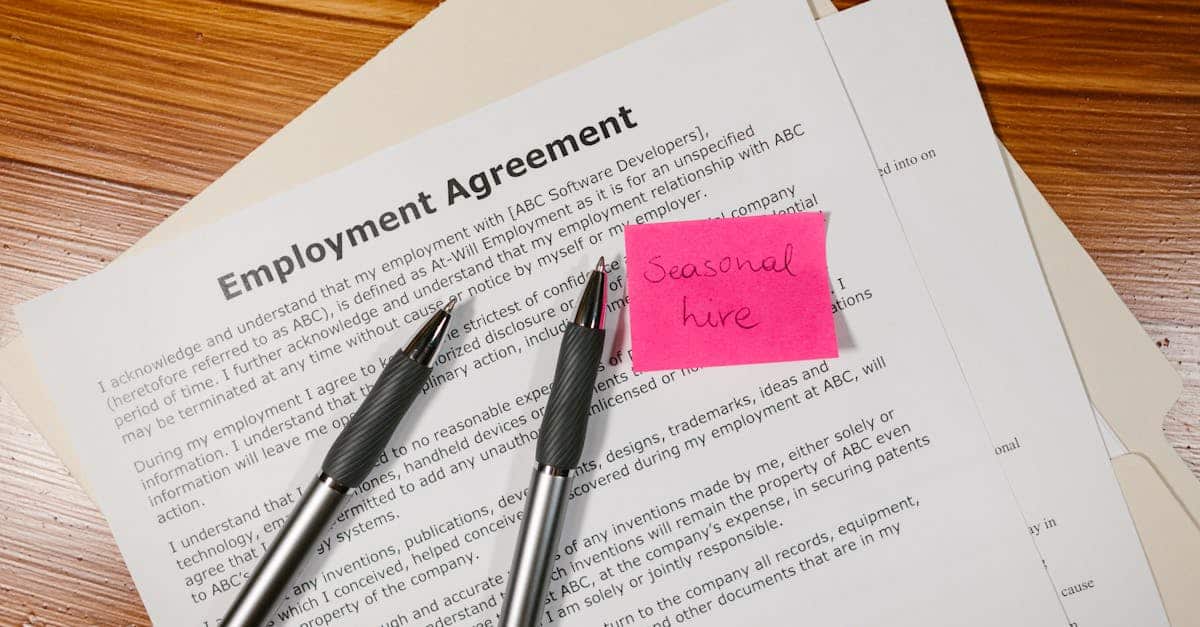
Introduction
Hiring across borders should speed you up — not slow you down with legal risk. As companies scale globally in 2025, HR teams face a patchwork of signature rules, identity‑proofing standards, privacy laws and local tax and statutory requirements that can turn a two‑day offer into a two‑week compliance exercise. Missed clauses, the wrong identity checks, or incomplete DPAs mean delays, exposure and unhappy candidates.
Use document automation to assemble the right bundle for each locale and to enforce guardrails in the signing flow. With a pragmatic e-signature integration as part of that stack, you can conditionally select signature trust levels, surface DPAs and privacy notices, capture immutable audit trails, and attach jurisdictional addenda automatically. Below you’ll find what to watch for on legal validity, the DPA and consent steps to embed, how to localize offers and tax forms, evidence and retention rules, a practical checklist, and automation recipes to make international onboarding repeatable and defensible.
Cross‑border hiring challenges: legal validity of electronic signatures across jurisdictions
Key issue: Not all countries treat electronic signatures the same. What’s valid in one jurisdiction may be treated as informal evidence in another.
What to watch for
- EU (eIDAS): distinguishes between simple, advanced, and qualified electronic signatures. Qualified e‑signatures have the highest probative value.
- United States: ESIGN and UETA generally make electronic signatures enforceable, but specific sectors (e.g., real estate, wills) may require wet signatures or notarization.
- Other jurisdictions: many countries (India, Brazil, Australia, China, etc.) have local rules for identity evidence, notarization, or specialized certificate chains.
When designing your e-signature integration, consider whether you need a higher trust level (e.g., requiring a qualified electronic signature or remote identity verification). If so, choose platforms that support those capabilities — for example, look for providers with DocuSign integration or Adobe Sign integration that also offer identity-proofing add‑ons.
Practical controls
- Map by-country signature requirements in a single reference matrix.
- Enforce conditional workflows that escalate to higher identity checks or wet signatures for restricted jurisdictions.
- Keep evidence of the signing ceremony: timestamp, IP, device metadata, audit trail and consent capture.
Data transfers and DPAs: what to include in signing flows to stay GDPR/CCPA compliant
Embed privacy safeguards into the signing flow. Signing is a data processing event — your flows must reflect controller/processor roles, lawful bases, and cross‑border transfer mechanisms.
Minimum DPA and transfer items to capture
- Controller/processor designation: clearly state roles for HR systems and e-signature vendors.
- Subprocessor list & approval: name or describe subprocessors and update mechanism.
- Data transfer mechanism: Standard Contractual Clauses (SCCs), adequacy decisions, or other lawful transfer bases.
- Security measures: encryption at rest/in transit, access controls, retention and deletion policies.
- Audit & incident response: breach notification timelines and cooperation clauses.
Include a DPA link in your signing UI where relevant so candidates can review before signing. Use a reusable DPA template — for example: Data Processing Agreement.
Consent & notice
- Show a concise privacy notice in the signing ceremony with a link to the full policy (e.g., Privacy Policy).
- Capture explicit consents required under GDPR or state privacy laws (e.g., CCPA/CPRA opt‑outs or sale disclosures).
- Log consent timestamps and the exact text the signer saw; make this an immutable part of the audit trail.
Localizing employment documents: state/jurisdiction addenda, tax forms and statutory notices
Localize core documents rather than creating many entirely separate templates. Use a base employment agreement and attach jurisdictional addenda.
Core elements to localize
- Statutory notices: mandatory language (e.g., probation, termination notice periods, working time rules).
- Tax forms: country/state specific forms (e.g., W‑4/State W‑4 in the US) or local payroll registration requirements.
- Benefits & statutory leave: parental leave, sick pay, social security contributions.
- Notice in local language: translations and legally‑approved wording where required.
Make these localized pieces modular so your e-signature integration can assemble the right bundle for each candidate. Use template sources like Employment Agreement and Job Offer Letter as starting points for standardized clauses.
Practical implementation
- Drive localization from a single master template with conditional blocks keyed by jurisdiction.
- Include an explicit checklist in the signing ceremony that shows which local documents are included.
- Capture acceptance of each localized addendum as discrete consent items in the audit trail.
E‑signature practices by country: identity evidence, consent capture, and retention rules
Evidence and retention vary. Determine what evidence you must keep to prove a signature’s validity in a given country.
Common evidence elements
- Audit trail: timestamps, IP, signer email, device fingerprints and document hashes.
- Identity evidence: government ID scans, knowledge‑based authentication (KBA), SMS/Email OTPs, or video/biometric verification.
- Consent capture: explicit checkboxes, displayed legal text, separate consent buttons for optional processing.
- Retention: minimum retention periods and format requirements (original vs. certified copy).
Examples by region:
- EU: eIDAS classifies signatures; qualified signatures often require a trust service provider certificate and have strong probative force.
- US: ESIGN/UETA support broad use, but identity evidence like KBA or ID verification strengthens enforceability in high‑risk cases.
- Latin America/Asia: many countries accept electronic signatures but may require notarization or e‑certificate chains for specific document types.
Platform capabilities to look for
- Support for multiple identity proofing options and configurable consent capture.
- Secure storage with exportable audit trails to meet jurisdictional retention rules.
- Integrations with your e-signature API and digital signature software to centralize evidence and records.
Template checklist for international hires: DPAs, localized offer letters, privacy notices and tax addenda
Use a single checklist to validate each international hire package. This reduces risk and speeds onboarding.
Must‑have items
- Data Processing Agreement: vendor & processor DPA attached and linked (see DPA template).
- Localized offer letter: language and jurisdictional clauses included (start from Job Offer Letter).
- Employment agreement with local addenda: include required statutory clauses (Employment Agreement).
- Privacy notice & consents: short notice in the signing flow and link to full policy (Privacy Policy).
- Tax & payroll addenda: local tax forms and payroll registration instructions.
- Identity verification proof: method used and stored evidence reference.
- Retention & export: storage location, retention period and method to export signed records.
- Fallback plan: when a wet signature or notarization is required.
Checklist best practice
- Make the checklist a gating step in your e-signature integration so documents cannot be sent until all items are ticked.
- Store completed checklists alongside the signed records in your document management system.
Automation recipes: trigger localized templates and DPAs based on candidate location
Automate selection of language, clauses and DPAs based on a single data point — the candidate’s declared location.
Recipe: ATS → e‑signature platform (example)
- Candidate profile created in ATS with country/state field populated.
- Workflow engine evaluates jurisdiction rules and selects a master template with conditional blocks.
- Attach required DPAs, privacy notices and tax addenda automatically (use URL to your DPA resource).
- Invoke your e-signature API to create an envelope: prefill fields, set identity verification level, choose provider (DocuSign integration or Adobe Sign integration).
- Send for signature and capture the audit trail back into the ATS/HRIS or DMS.
Integration knobs and tips
- Use geolocation and the candidate’s profile to choose between e-signature integration with Salesforce or direct API calls to your signature provider.
- Expose configuration in an admin UI: map country → signature level → required documents.
- Support multiple providers and failover (e.g., primary DocuSign, fallback Adobe Sign) via your e-signature integration API.
- Test end‑to‑end scenarios, including locale formatting, consent language, and export of audit trails for legal review.
Recipes to consider
- Contract lifecycle management with e-signatures: automate renewals and re‑consent when laws change.
- Workflow automation using electronic signatures: trigger payroll onboarding and background checks after signature completion.
- API integrations for legal documents: push signed artifacts to ERPs, CRMs (including Salesforce), and document archives.
If you need a practical starting point, look for platforms or middleware that support e-signature integration API calls, have built connectors for CRMs/ERPs, and provide templates for secure document signing for enterprises.
Summary
Bottom line: Cross‑border hiring remains legally complex, but it doesn’t have to be slow or risky. Focus on three things: pick the right signature trust level for each jurisdiction, bake DPAs and clear privacy notices into the signing flow, and localize offer and tax addenda from a master template so every package is complete and auditable. Document automation reduces manual work, enforces compliance guardrails, and makes it simple to attach evidence and retention rules to each hire, and a pragmatic e-signature integration ties those pieces together so HR and legal can move at hiring speed. For a practical starting point and templates, visit https://formtify.app.
FAQs
What is e-signature integration?
E-signature integration is the connection between an electronic signing provider and your HR, ATS, CRM or document systems so signatures, audit trails and documents flow automatically. It eliminates manual uploads and preserves signing evidence in the systems you already use.
How does e-signature integration work?
Typically it uses API calls or prebuilt connectors to create envelopes from templates, set identity‑verification levels, prefill fields and send signing requests. The integration then captures the audit trail and returns signed artifacts to your ATS/HRIS or DMS for storage and compliance.
Are e-signatures legally binding?
In many jurisdictions electronic signatures are enforceable (for example under ESIGN/UETA in the US and under eIDAS in the EU), but enforceability can depend on document type and signature level. Some countries or specific documents still require wet signatures, notarization, or a qualified electronic signature for the highest probative value.
Which e-signature providers offer integrations?
Major providers like DocuSign and Adobe Sign offer extensive integrations and APIs, and others such as Dropbox Sign (HelloSign), OneSpan and SignNow provide connectors and developer toolkits. Choose a provider that supports the identity proofing, qualified signatures and exportable audit trails your cross‑border workflows require.
How do I integrate DocuSign with Salesforce?
Install the DocuSign for Salesforce package or use DocuSign’s API to connect, then authenticate the integration and configure envelope templates and field mappings. Test end‑to‑end flows, set identity verification options, and map the signed documents and audit trails back into Salesforce records for compliance and reporting.





